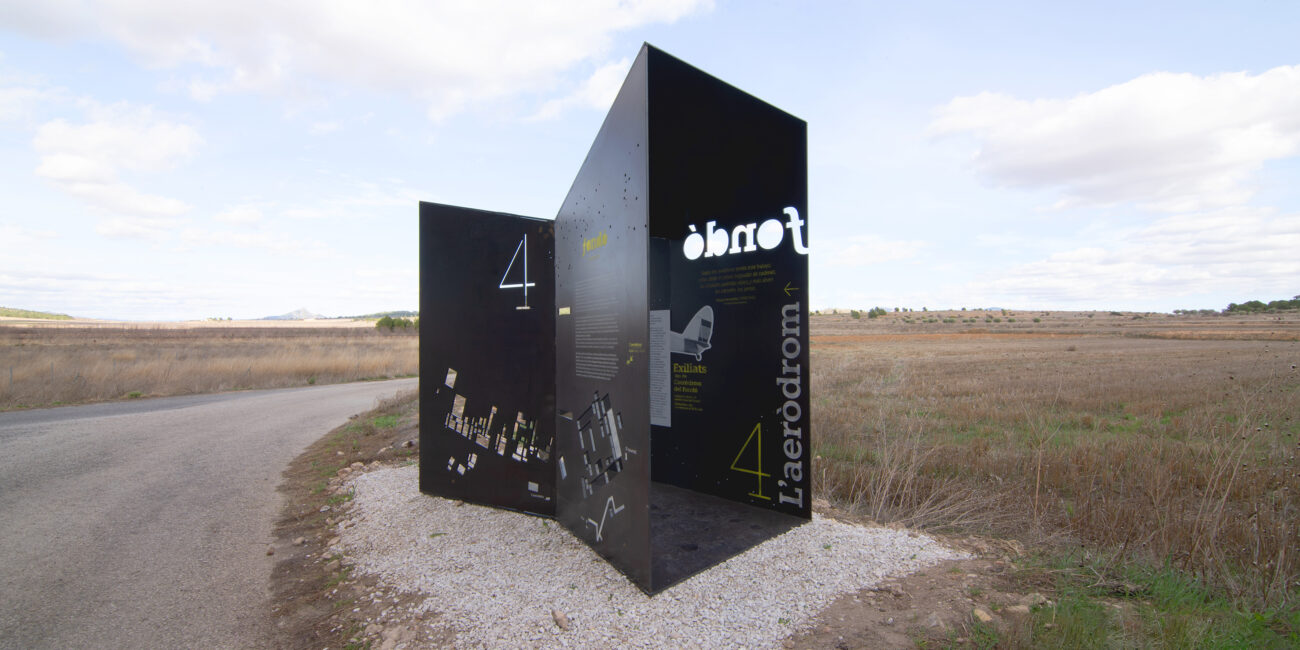THE FONDÓ OF MONÒVER

MUSEUM OF DEMOCRATIC MEMORY OF THE LAST DAYS OF THE SECOND REPUBLIC IN SPAIN
Client: City council of Monóvar Date: 2021 Categories: Ethnography, Permanent Exhibition, Historical memory, Enhancement, Signposting
Location: Fondó Monòver (Alicante, Spain) Execution and Production: Proyectable Estudio Museum Design: Rocamora Diseño y Arquitectura Photography: Rocamora Diseño y Arquitectura
Museum of historical memory of the last days of the II Republic in Spain.
The scattered museum of the Fondó, in Monòver, in an area of crops and pine forests, and with an important story to tell.
The Fóndó Museum is free to visit, perched in the landscape, composed of four milestones that tell the history of the place, intertwined with the hamlet and the roads and that, like sculptures that speak, make the visitor become a constructive detail of what is being told.
What does it mean to build a museum in a hamlet of ten inhabitants in the interior of the province of Alicante, between crops and pine forests?
El Fondó has an important story to tell. It is the place of the last days of the II Republic in Spain. It is a very relevant heritage of historical memory. Here, during the war, there was an airfield of 1.5 km2, with an air raid shelter, now a museum, and also a military barracks.
The shelter and the future Interpretation Center are now open to visitors in a rural school from the 1970s that has now been disentailed.
Given the immaterial complexity of almost everything that is told and the difficulty of being able to make a visitable museum, due to economy and infrastructure, it was decided to rethink the concept of this space and project it as a sum of disintegrated places that articulate the place and that are toured in its interpretation and enjoyment. These architectural supports generate the habitat that protects the information inside, that communicates in the distance, that creates the circulation between them and that, with the physical, cold contact, the visitor perceives their intimate relationship.

